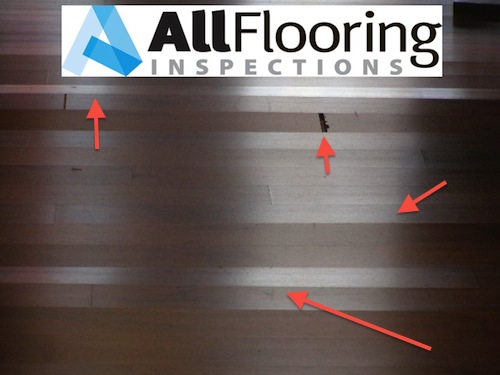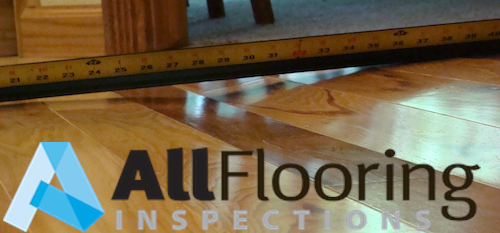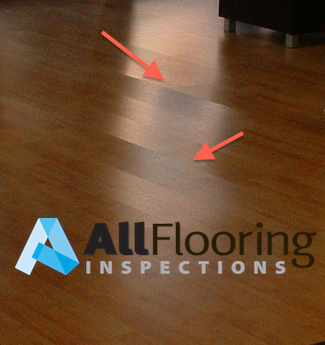Buckled Laminate Flooring
What is Laminate Floor Buckling?
A buckled laminate floor literally pulls away from the subfloor. It can rise up to several inches in one or more places.
Various conditions and factors can lead to a buckling problem, but once it has pulled partially or all the way away from the subfloor, the floor will generally not return to its intended flatness, without help.
Buckling is sometimes referred to as “tenting”, particularly when it is installed as a floating floor. Some people describe a buckling condition as the floor being “rippled”.
Buckled Laminate, With Planks Coming Up
In this image, three distinct buckles are visible on the floor. On the top buckle (directly beneath the All Flooring Inspections logo), the buckled planks are also affected by end joint gaps.

This type of issue is not what the end user envisioned, when they were selecting a new floor. If you have a similar problem with your laminate floor, then please contact us now to set up an inspection appointment.
Laminate Buckling and Tenting
Here is a side view of a buckling condition. This angle offers a good vantage point to see the lifting and tenting that can affect a floating floor, when it becomes buckled.
Other planks in this installation, which took place outside of New Orleans, were affected by scratches, and bubbling.

Once a laminate floor buckles like this, it will usually not return to its normal position, without help. Give us a call or send us an email to discuss your concerns.
Laminate Rippling
This flooring installation in the image below took place near Dallas, Texas. The house was recently constructed, shortly before the flooring inspection happened. The builder installed this floating floor as part of the new construction.
The rippling condition began as an uneven feel under foot, near the center of the living room. Over time, planks began lifting up. The boards made noise (link to laminate noise) and moved vertically (vertical movement is also known as deflection) as they were walked upon. This lifting can often be felt before the issue is visible to the naked eye (this is because issues like cupping and buckling are more readily visible in certain lighting conditions and angles).
